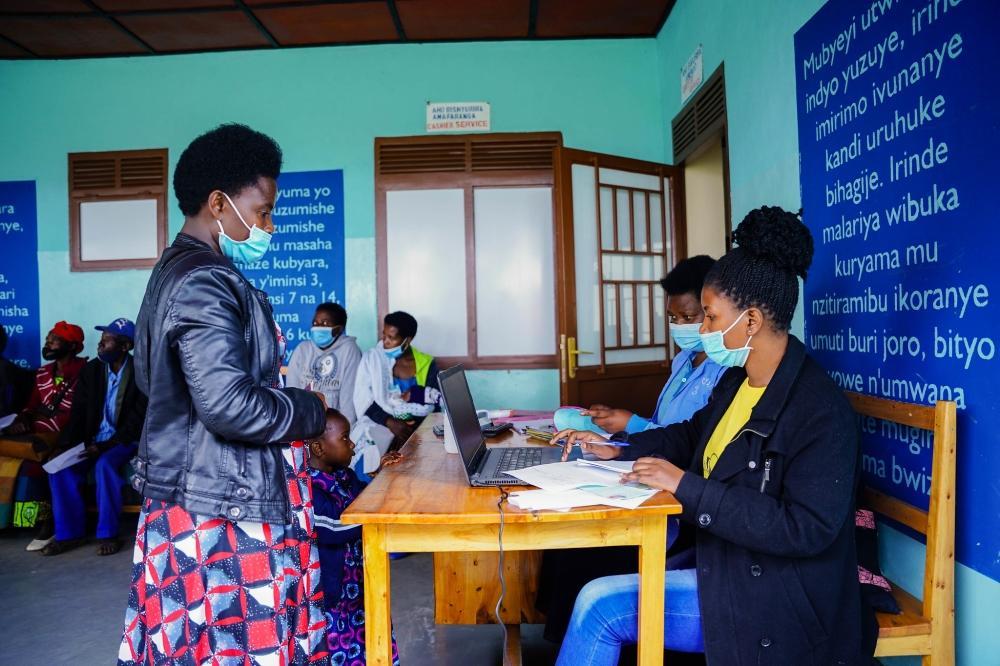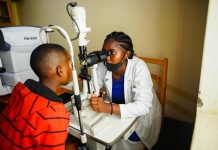Africa-Press – Rwanda. The government is set to implement a new strategic plan whose purpose is to accelerate progress toward universal health coverage and ensure equitable improvement of health outcomes through evidence-based prioritisation of high-impact interventions.
The total estimated cost of the Health Sector Strategic Plan V July 2024 – June 2029 (HSSP V) is Rwf5.9 trillion ($4.23 billion) under scenario 1, and Rwf6.9 trillion ($4.92 billion) under scenario 2, as per information contained in the new blueprint.
It indicated that the costing was estimated using two scenarios. The first scenario prioritises high-impact interventions and, in some multi-sector investments (for instance Water, Sanitation and Hygiene – WASH), the sector will only invest in policy and guidance, advocacy, and quality control activities and not in the fulfillment of materials and other equipment.
The second scenario uses the assumption that Rwanda will fully realise SDG goals (including universal health coverage) and other additional high-level outcomes.
The development of the new blueprint was based on a deep-dive analysis of the health sector data that informed the prioritisation of and built on new reforms in the health sector, according to the Ministry of Health.
It added that it considered the lessons learned from the COVID-19 pandemic response and the implementation of HSSP IV – the fourth health sector strategic plan which runs from 2019 through 2024.
The country is embarking on “a new phase where it will shape our collective commitments to ensure equitable, and high-quality healthcare for all,” said the Minister of State for Health, Dr. Yvan Butera, on Friday, January 31, as Rwanda launched the strategic plan.
He said that health financing was observing some shocks.
“We also need to readjust and think how we can mobilise more resources, that’s number one, but number two is how we can efficiently use the resources that we have in investing in very high impact interventions,” he said, observing that it will require precision, data and people to do things that bring huge impact, and that digitisation is an enabler across all that.
“So, we will see a lot of focus going forward with digitisation enabling us to make the right decision in the right time at the right place,” he said.
Health infrastructure modernisation
This pillar targets the transformation of health facilities so that they are clean, safe, user-friendly, climate-resilient, meet applicable standards, accommodating innovations and new digital technologies, and supported by an effective accreditation process.
It aims to establish the Kigali Health City (a high-tech and innovative health city); upgrade 10 existing hospitals and 23 health centres, and renovate 30 per cent of existing facilities countrywide.
Health workforce development
The estimate of the ratio of skilled health professionals with active licenses as of December 2023, was 1.2 per 1,000 population, which is much lower than the World Health Organization’s (WHO’s) minimum density, which identified an “SDG index threshold” of 4.45 doctors, nurses, and midwives per 1,000 population.
The public sector absorbs 66 per cent (15,966) of all the healthcare professionals (24,047) with active licenses. The categories of medical professions that are less present in the public clinical sector are pharmacists (4 per cent), specialists (37 per cent), and general practitioners (40 per cent).
The average workload across all hospitals is about 15 cases per day per doctor.
To address such a situation, the country, through the strategic plan, seeks to prioritise the creation of a robust health workforce that is well-trained, adequately supported, and optimally deployed to meet the health needs of the population.
The primary focus of the health workforce pillar is the “4×4” reform, which aims to quadruple the number of healthcare workers during this strategic plan period, by revamping health education policies and practices. In line with the reform, career development, empowerment, and welfare of the health workforce will be the centre of attention.
Health workforce retention
The strategic plan’s priorities and key actions include strengthening health worker-cantered retention to address “high rates” of attrition.
Key interventions include increasing incentives; investing in continuing professional development, in-service training, and mentorship to enable career growth and advancement, both clinically and academically; and increasing remuneration per grade acquired.
To attract more health workers to the public sector, the Ministry of Health will advocate for health workers’ saving schemes to be capitalised through the Government of Rwanda budget, strengthening the management of those schemes, and improving borrowing terms to incentivise health care professional retention, as per the strategic plan.
Infectious disease prevention and control
Other priorities and key actions outlined in the blueprint include infectious disease prevention and control.
The strategic plan aims to maintain the momentum achieved so far and strengthen HIV and sexually transmitted infection services utilisation among adolescents and key populations.
High-priority interventions include implementing targeted and customised HIV prevention awareness campaigns and ensuring the availability of high-quality treatment and prevention commodities.
Integration of HIV and Sexual and Reproductive Health and Rights (SRHR) services in all health facilities and communities will continue.
High adherence to Antiretroviral Therapy (ART) will be maintained through the continued expansion of community treatment support programs and engagement of schools in treatment support for adolescents and children.
HIV surveillance will be strengthened through digitalisation and interoperability of information systems.
To continue the elimination of viral hepatitis, vaccination and effective case management efforts will continue.
Laboratory capacity will be enhanced to address drug resistance for HIV, hepatitis, and sexually transmitted infections, complemented by innovations such as HIV genotyping, to ensure early drug resistance testing and management.
TB incidence and case fatality rates have both declined in recent years due to early detection, screening of at-risk individuals, and adequate treatment – the total number of tuberculosis (TB) cases recorded from 2019–23 was 26,182, with 1,813 deaths recorded during the same period, according to data from the Ministry of Health.
In the next five years, the strategic plan pointed out, the focus will shift to community detection of TB cases using digital tools and new technologies to reach high-risk populations (healthcare workers, including community health workers, prisoners, miners, and individuals with immune-compromising conditions such as HIV and malnutrition) early, thus preventing spread among close contacts.
Non-communicable disease (NCD) prevention and control
The strategic plan envisions Rwanda free from the avoidable burden of NCDs, including injuries and disabilities. To achieve this goal, it is expected priority interventions will be built on the foundation of community action and engagement through community health workers.
The major focus/priority is to reduce the prevalence of major risk factors in the population by raising awareness and educating the public using innovative and targeted strategies, integrating risk factor education into school health programs, and establishing wellness programs through occupational safety and health initiatives in the workplace.
Policies and regulations addressing risk factors will be established and strengthened along with ensuring immunisation and early treatment of infections that lead to NCD.
Another strategic focus is to strengthen the healthcare system to deliver quality NCD services, including early detection and timely management of NCDs.
Strengthening the capacity of the health system for NCD screening, diagnosis, and management is one of the priorities and strategic shifts of HSSP V.
Key strategic shifts include capacity building for human resources, implementing community screening, and strengthening the linkage between community- and facility-based health services.
Health facilities will be restructured to accommodate a dedicated department for chronic diseases. Specialised NCD diagnostic and treatment centers will also be enhanced through investments in infrastructure, equipment, and human resources.
Home-based NCD care services will be promoted. The availability of NCD medications and commodities will be improved.
Artificial intelligence (AI) and telemedicine will be leveraged to enhance NCD care and treatment. Disability and rehabilitation services will be integrated into the health system, not only in primary and community settings but also in secondary and tertiary care facilities.
Emergency medical services and trauma
A strengthened emergency medical services (EMS) system, spanning from pre-hospital to emergency services and critical and operative care, provides an effective platform for delivering accessible, quality, and timely health care for acute illness and injury.
Key priorities include implementing efficient coordination across the health system that involves developing an EMS policy and restructuring and updating ambulance service tariffs to enhance revenue recovery.
In addition, service packages for emergency care across different levels of the healthcare system will be developed and implemented. For pre-hospital services, securing new ambulances to achieve a rate of one ambulance per 20,000 population—an improvement from the current one per 50,000—is essential, the scheme indicated.
New EMS IT (information technology) solutions should be established to improve caller location identification, ambulance dispatching, and overall data management to meet national response time targets. Community-level first responders trained in first aid will be introduced to enhance accessibility and initial response to emergency cases.
Moreover, access to emergency surgical and acute-care rehabilitation services will be expanded and aligned with national plans.
Nationally, a poison information center to provide vital resources for managing poison-related emergencies will be established. The national standardised triage system will be bolstered with clear waiting time targets and compliance tracking mechanisms for efficient patient care.
Furthermore, expanding infrastructure revitalisation projects and training programs for mass casualty management will be pursued, as per the plan.
For More News And Analysis About Rwanda Follow Africa-Press






